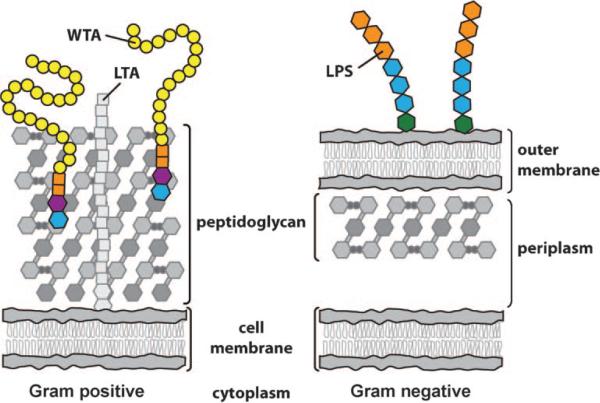Figure 1.
Simplified depiction of Gram-positive and Gram-negative bacterial cell envelopes. Gram-negative organisms have a distinct periplasm; Gram-positive organisms do not, but recent studies have suggested that they have a periplasmic-like compartment between the plasma membrane and the base of the peptidoglycan layers.[3] Proteins are omitted from the depictions for clarity. Membrane-embedded, membrane-anchored, and peptidoglycan-associated proteins are abundant in the cell membranes of both Gram-positive and Gram-negative organisms. LTA: lipoteichoic acid; LPS: lipopolysaccharide; WTA: wall teichoic acid.

